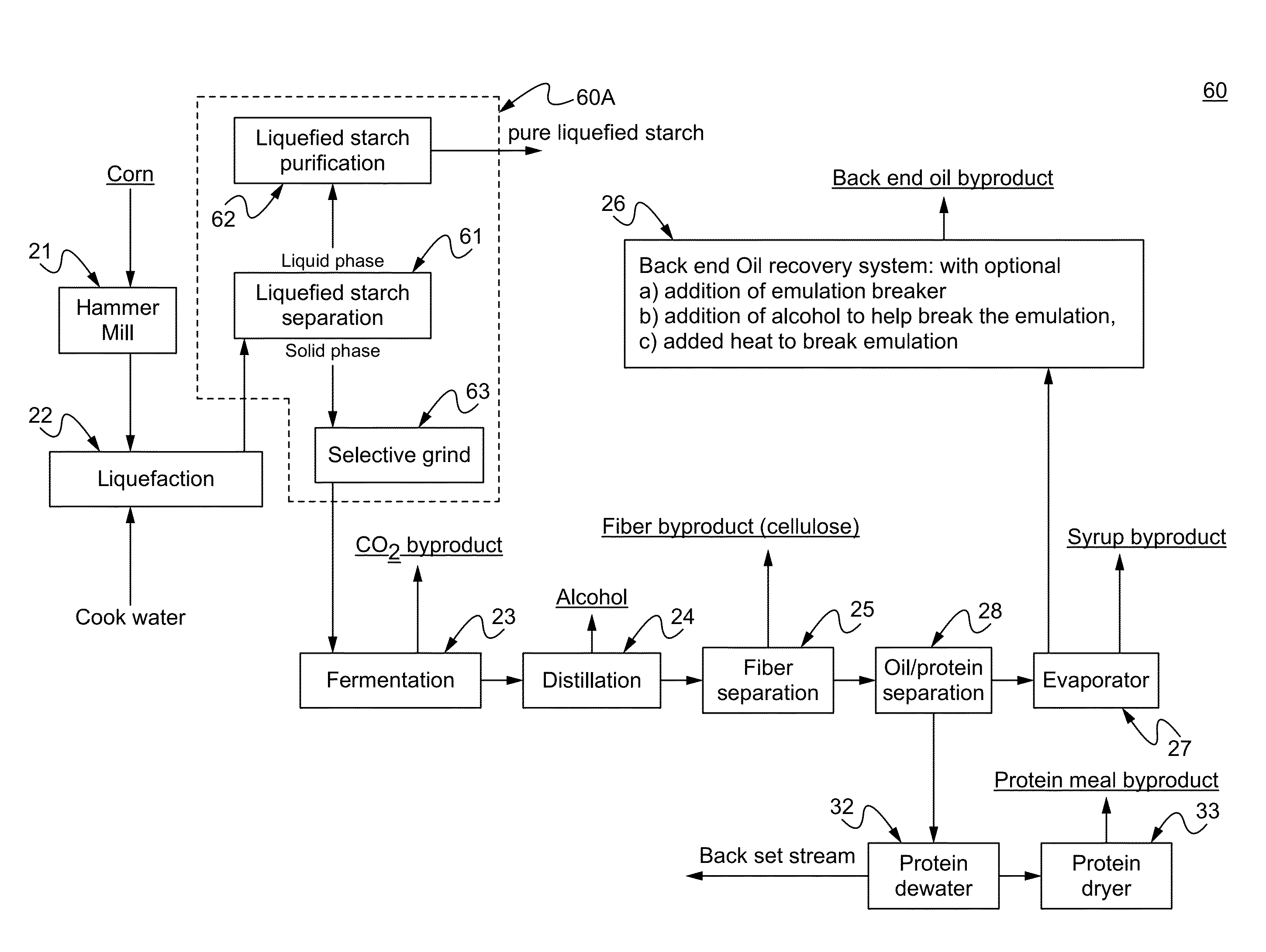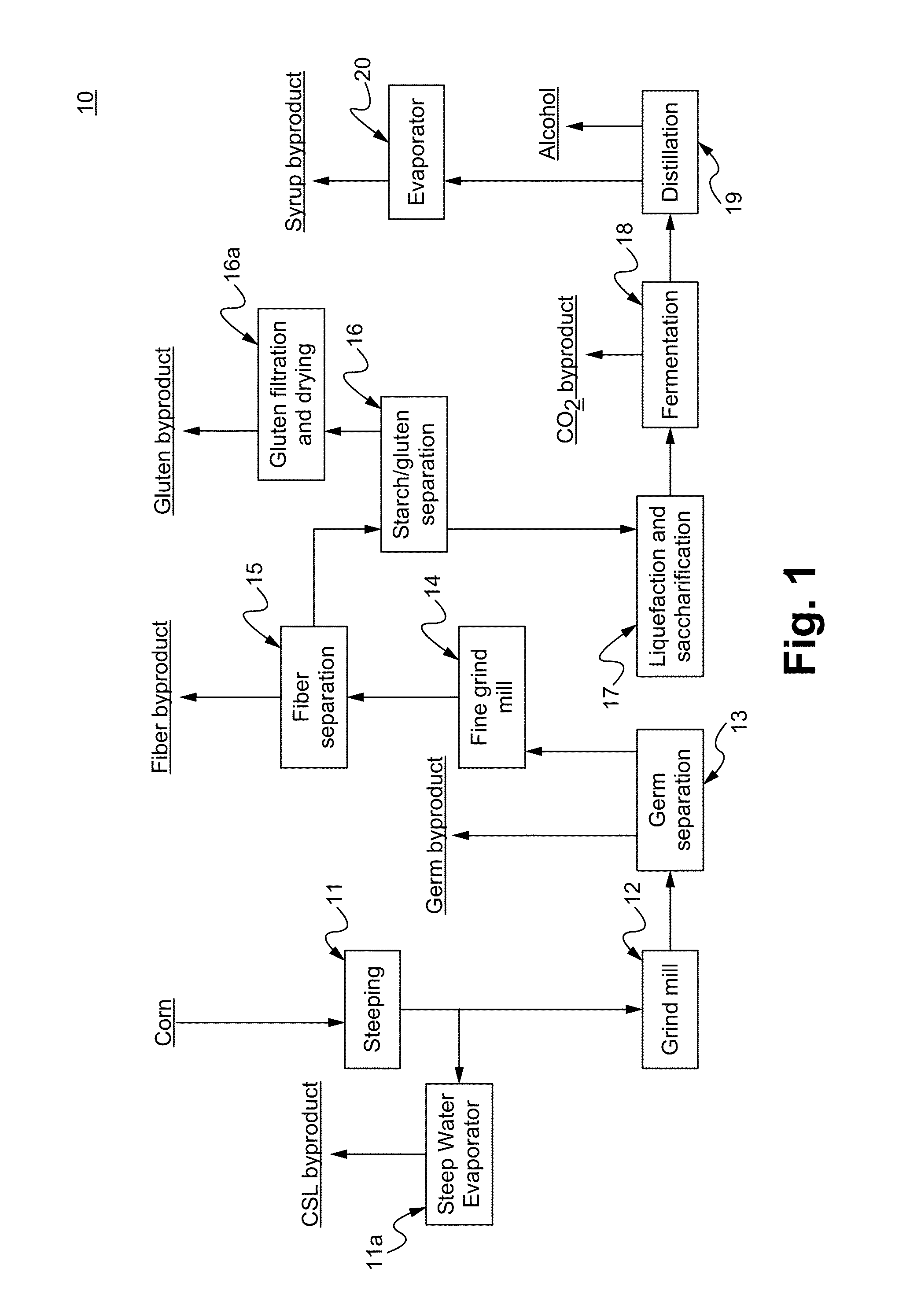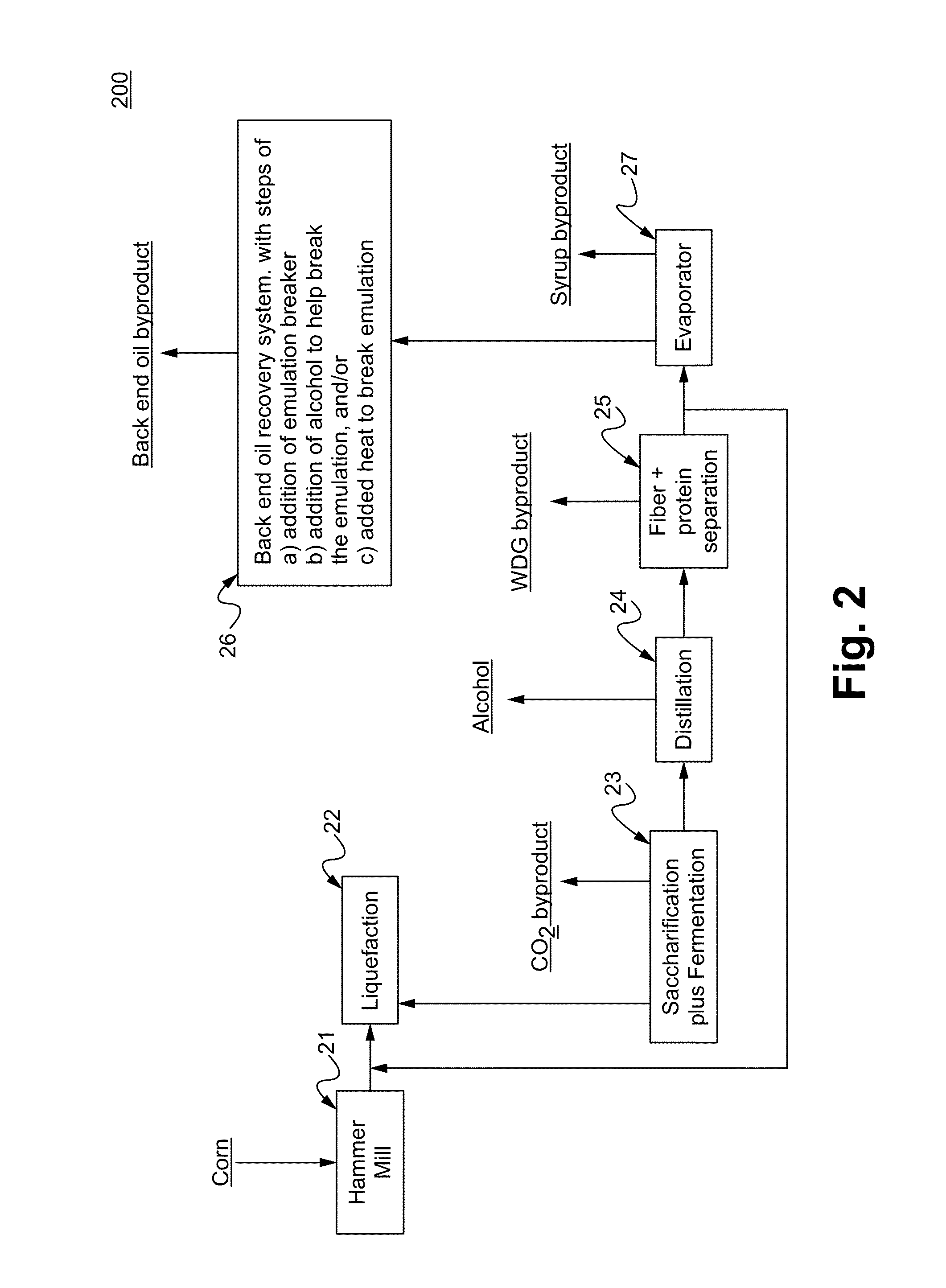System for and method of separating pure starch from grains for alcohol production using a dry mill process
a technology of dry mill and pure starch, which is applied in the field of dry mill plants, can solve the problems of high chemical cost, high capital investment and high energy cost of operation, and complex wet mill process
- Summary
- Abstract
- Description
- Claims
- Application Information
AI Technical Summary
Benefits of technology
Problems solved by technology
Method used
Image
Examples
example 1
[0099]Milled corn was obtained from a commercially operating ethanol plant using hammer mills equipped with 7 / 64″ screens. The milled corn was sent through a #35 USA standard testing sieve (500 MM). 62% of the flour passed through the screen and 38% was captured on the screen. The material which passed through the screen (sub 500 micron) was collected and used for the following corn starch extraction test.
[0100]Seventy five (75) grams of the sub 500 micron milled corn was added to 500 mLs of water and thoroughly mixed. Sodium carbonate (soda ash) was added to the mixture until a pH of 9 was reached. The corn slurry was placed in a lab Waring blender and blended for 2 minutes. The blended corn slurry mixture was then placed on a hot plate with magnetic stirrer and brought up to 50° C. and held at this temperature for 1 hour under constant agitation.
[0101]The heated corn slurry was then poured into two 300 mL containers and centrifuged in a lab centrifuge at 2000 rpm's for 1 minute. T...
PUM
 Login to View More
Login to View More Abstract
Description
Claims
Application Information
 Login to View More
Login to View More - R&D
- Intellectual Property
- Life Sciences
- Materials
- Tech Scout
- Unparalleled Data Quality
- Higher Quality Content
- 60% Fewer Hallucinations
Browse by: Latest US Patents, China's latest patents, Technical Efficacy Thesaurus, Application Domain, Technology Topic, Popular Technical Reports.
© 2025 PatSnap. All rights reserved.Legal|Privacy policy|Modern Slavery Act Transparency Statement|Sitemap|About US| Contact US: help@patsnap.com



